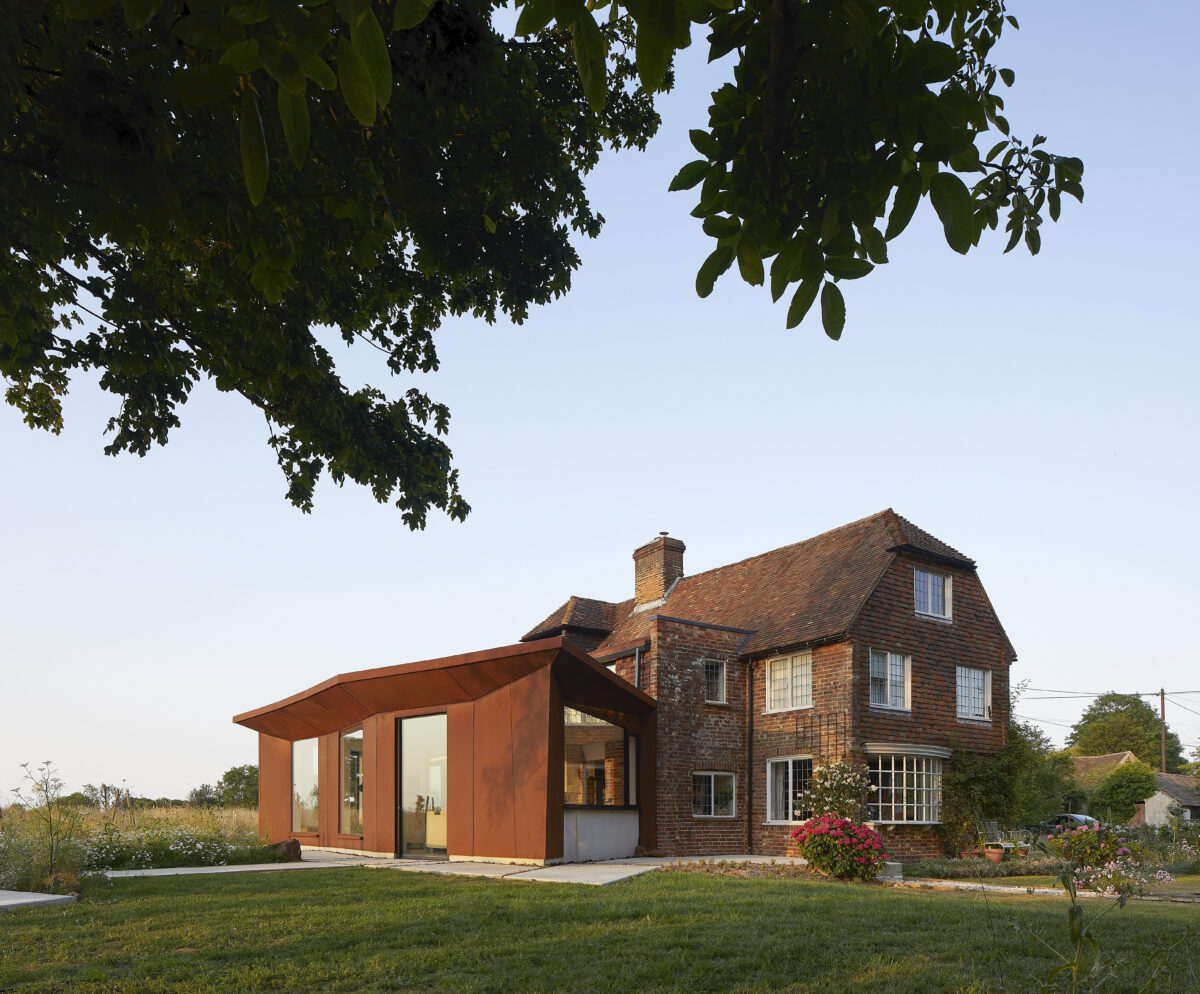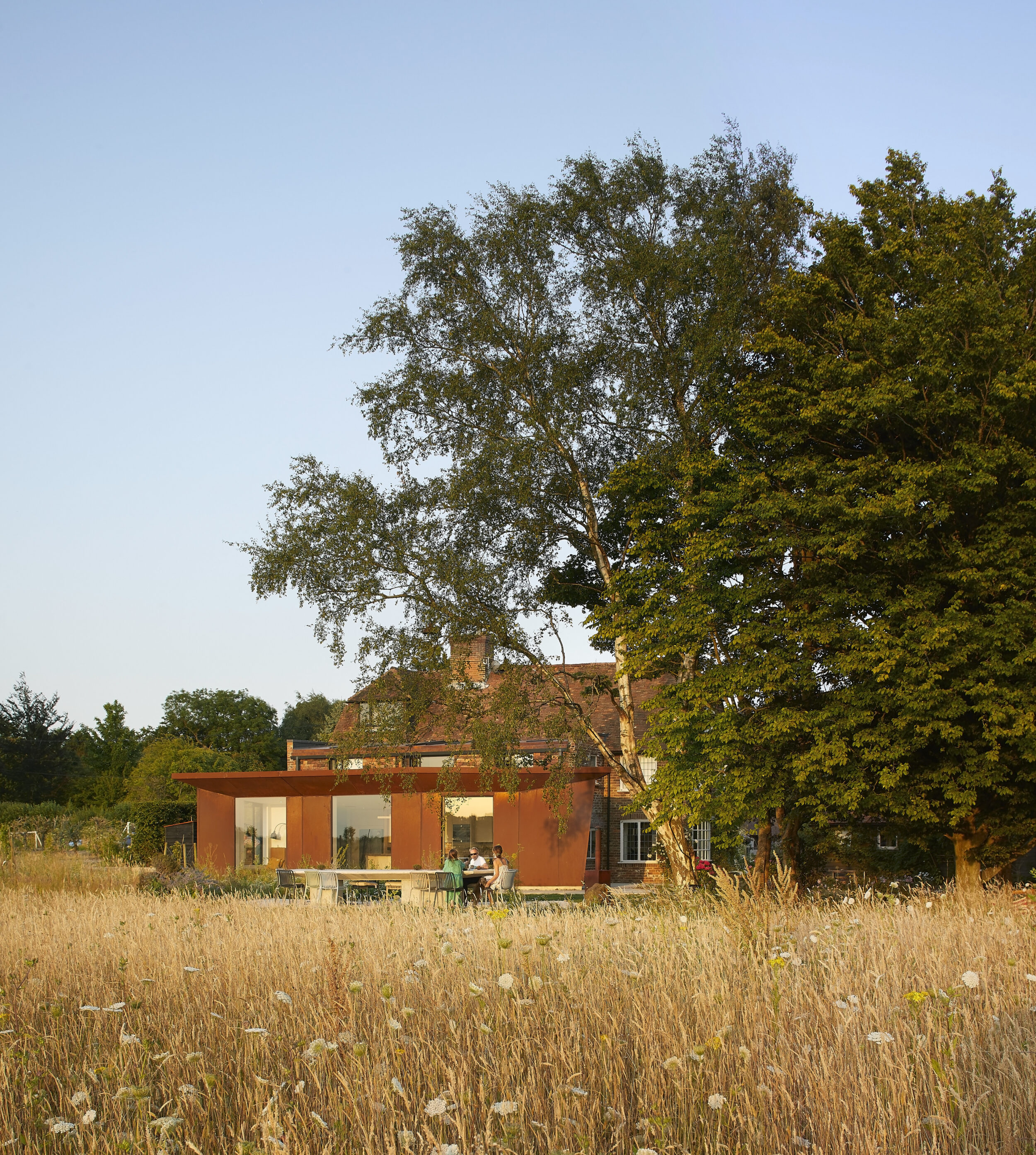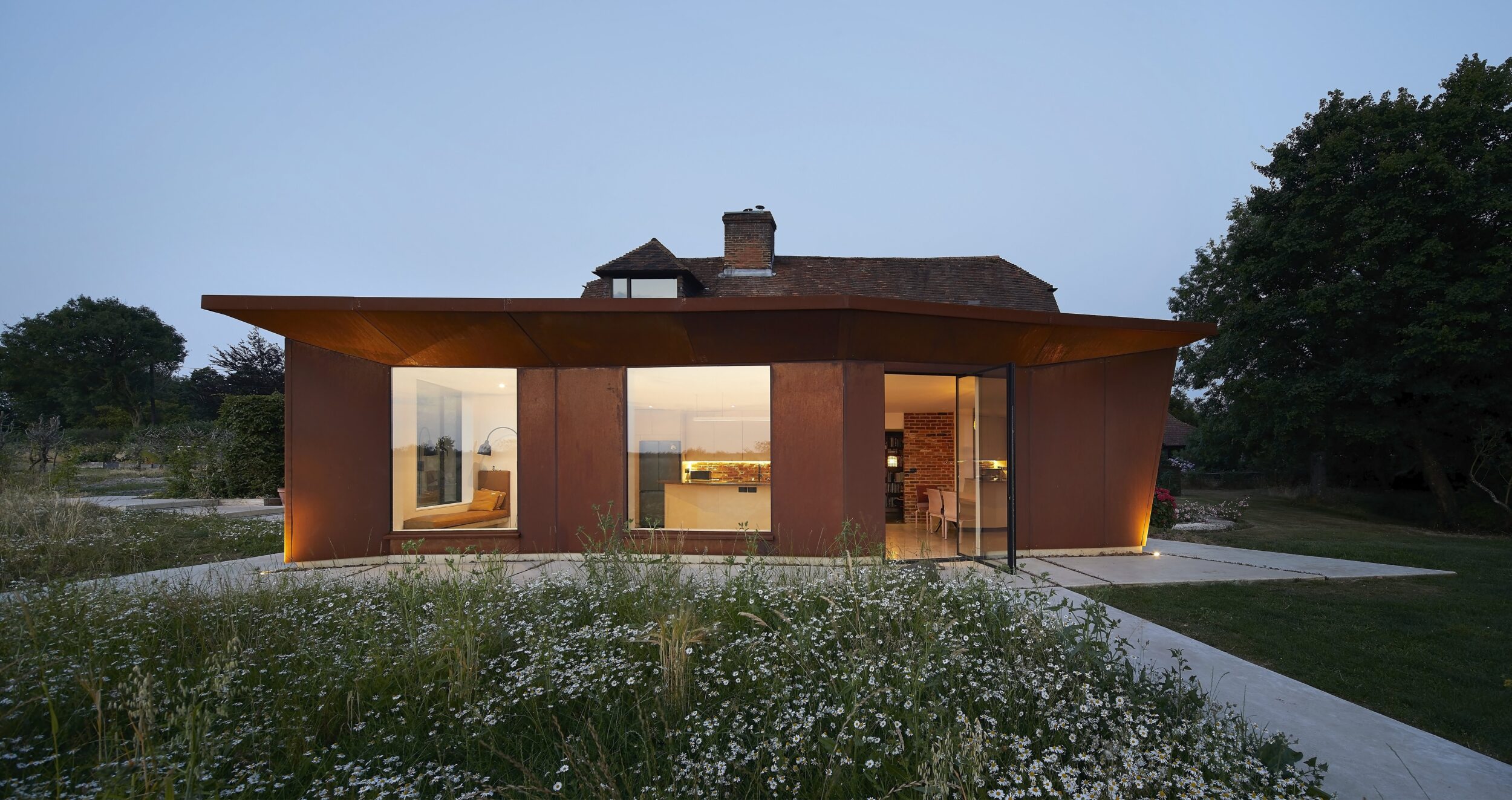
Hollaway Studio’s RIBA Regional Award-winning design for Upper Maxted can be regarded as the client’s, Ed & Rebecca, paean to architecture.
While uncompromisingly contemporary, the extension Hollaway have created has been completely inspired by the 18th century Grade 2 listed farmhouse and setting.
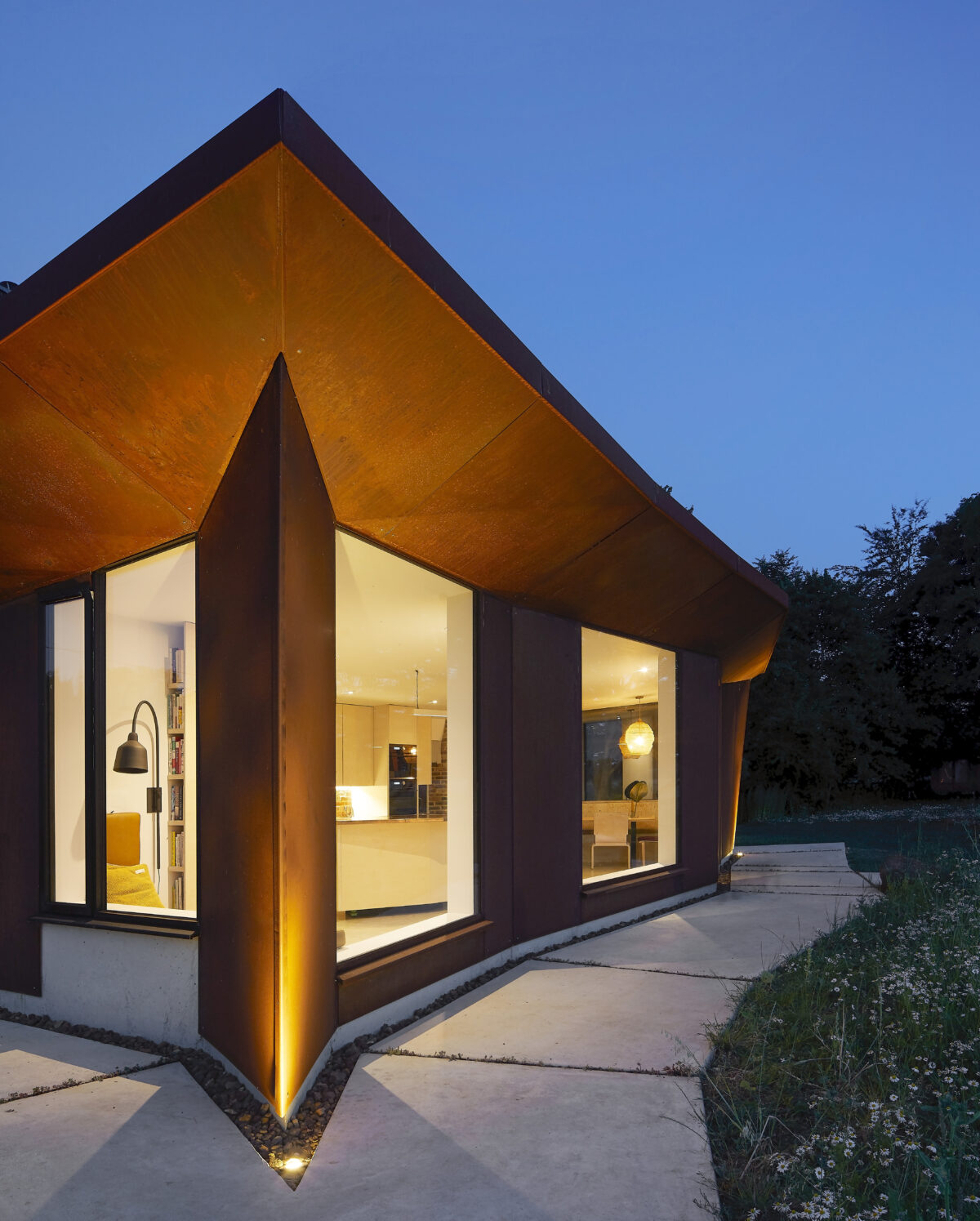
Its materiality reflects the colours of the existing brick and tiles with further inspiration drawn from the iron ore deposits in the very ground the existing house and land sits on. Upper Maxted takes its essence from the very land around it to seamlessly integrate within the existing building while accommodating a growing family’s needs.
Hollaway Studio worked closely throughout with the clients who had well formulated ideas of how they wanted the extension to look in terms of clarity and boldness while retaining the historical integrity of the original site.
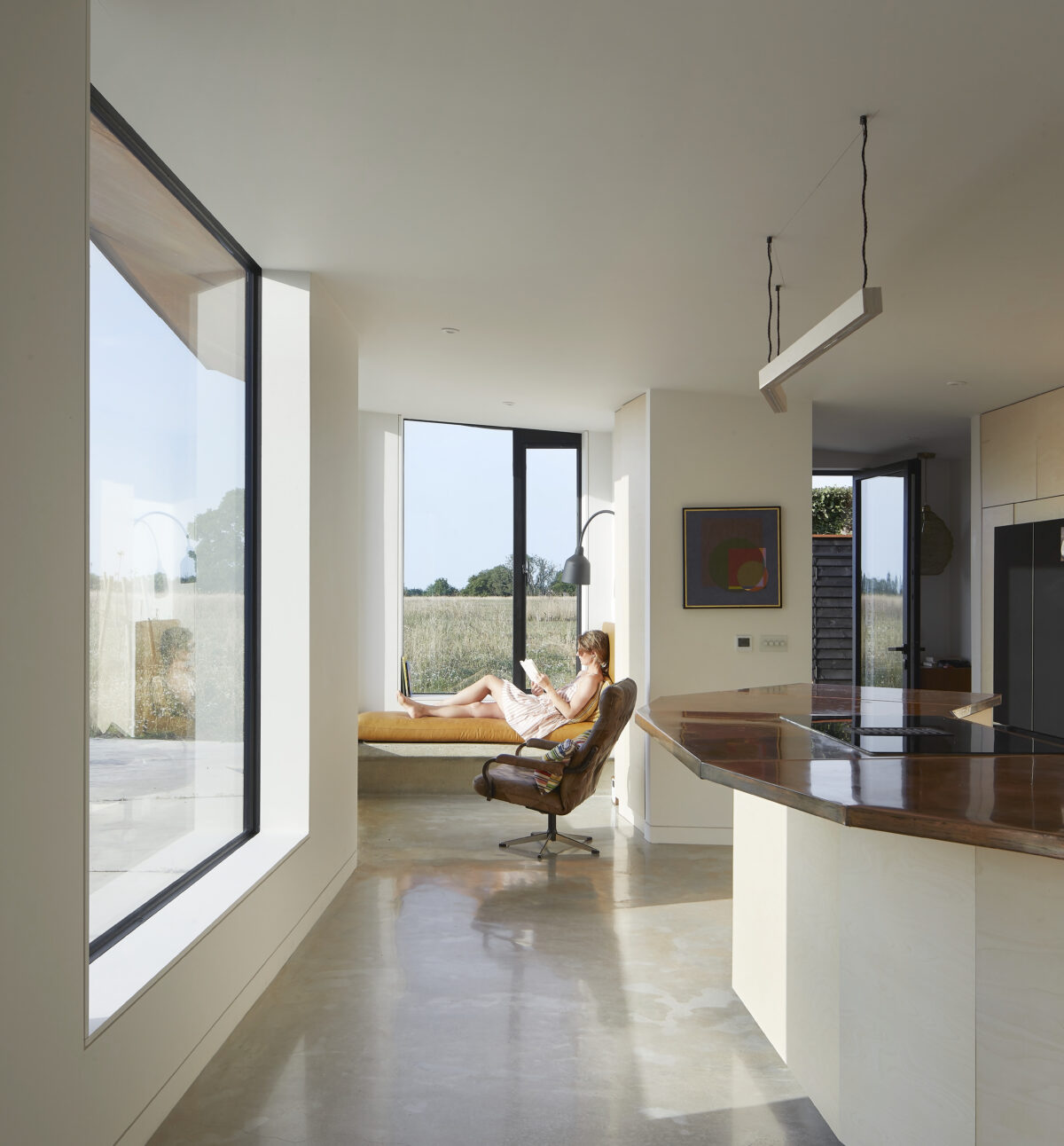
‘We feel like we’re custodians of the house, so we had a sense of wanting to tread carefully so as not to disturb the past, while also projecting into the future,” explains Rebecca.
Guy Hollaway – “The building will give you the clues you need, you just need to look for them. Sometimes it’s hard to discover the original purpose and meaning of the building design, but if you can get to that, then you can unlock its secrets.”
“We decided early on that we wanted to enjoy the journey,” explains Ed. “There were always things to resolve – that three-way conversation between architect, builder, and client – but we all enjoyed it. It felt like a collaboration.”
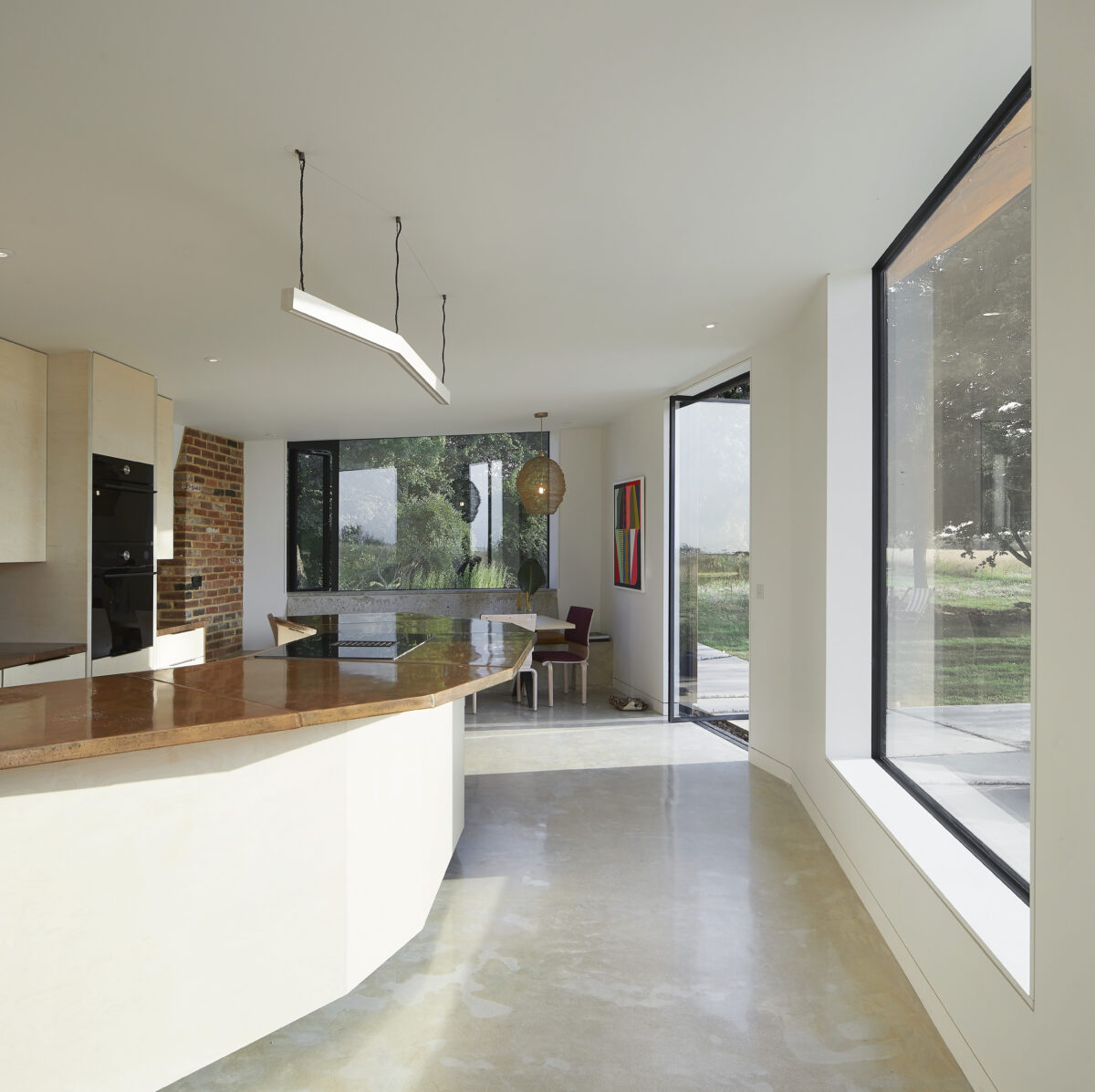
Hollaway Studio’s design has created a contrasting space with high ceilings and flooded with light, While typical of its age, the existing farmhouse has traditional low ceilings and consequently darker rooms. The extension acts as a surprisingly complimentary addition to the more traditional home while the design represents a very different architectural aesthetic in this idyllic pastoral setting.
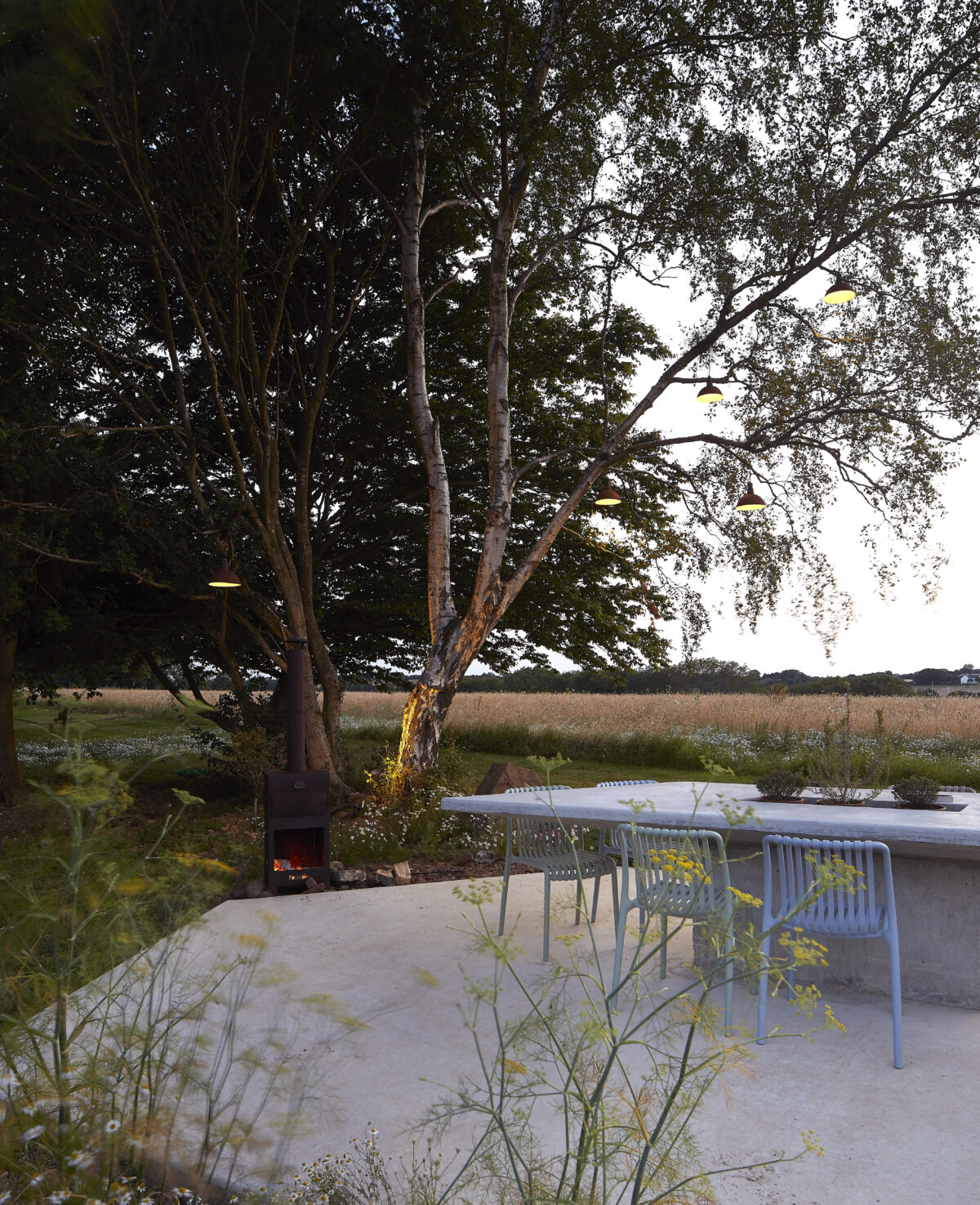
Sculpted roof overhangs protect the large picture windows from the sun, each set at a different direction to frame a unique view, creating an undulating form to the building. The meadow grass continues beyond the immediate garden and is used on the roof of the extension, helping to create greater biodiversity and in turn increasing the thermal mass of the roof.
The new extension has become part of the whole building, rather than an attachment. Ed concludes that, “If you introduce something distinct and confident in its own terms, then it creates a story across the whole history of the house.”
